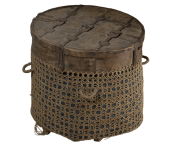TwoNoteableCorruptions
Well-known member
"Constantinos Simonidis in the Gennadius Library"
By Pasquale Massimo Pinto
Page 99
Footnote 26
By Pasquale Massimo Pinto
Page 99
Footnote 26
The letter is pasted onto the front endpaper of the volume bearing the call number BB 1226.69 and containing the works described just below under D. Here is the text of the letter from Farrer to Hodgkin: “50, Ennismore Gardens, Prince’s Gate. / Dear Mr. Hodgkin, I am leaving all the papers I took away the other day, except the curious uncial tracing, which seems to be from the Shepherd of Hermas. This I am anxious to compare at the Brit. Museum / with Tischendorf’s Facsimile of the same at the end of his Codex. I expect your volume of Lithograph letters contains a treatise by Simonides on Aγιογραφια, on the Church Art of Mt. Athos. A letter I found / from Alexander Sturzas (at least I think he is meant by A. S. S.) is dated from Odessa, April 14, 1852, and acknowledges the receipt of it. If so, the presumption is that the other letters were really also lithographed about that time. My arrangement of the papers is quite [a word was probably left out], but will, I hope, / facilitate reference for future use, should such ever be required. Yours very truly J. A. Farrer».
- Why would Simonides even need tracings of what could quite possibly be Tischendorf's text, when he himself allegedly wrote the said text, and could reproduce it at will with his own hand?
We know the answer...it's obvious...
Mr Avery, following closely in the footsteps of his master, Simonides (a master-liar), will now proceed to INVENT an alibi...out of thin air...

